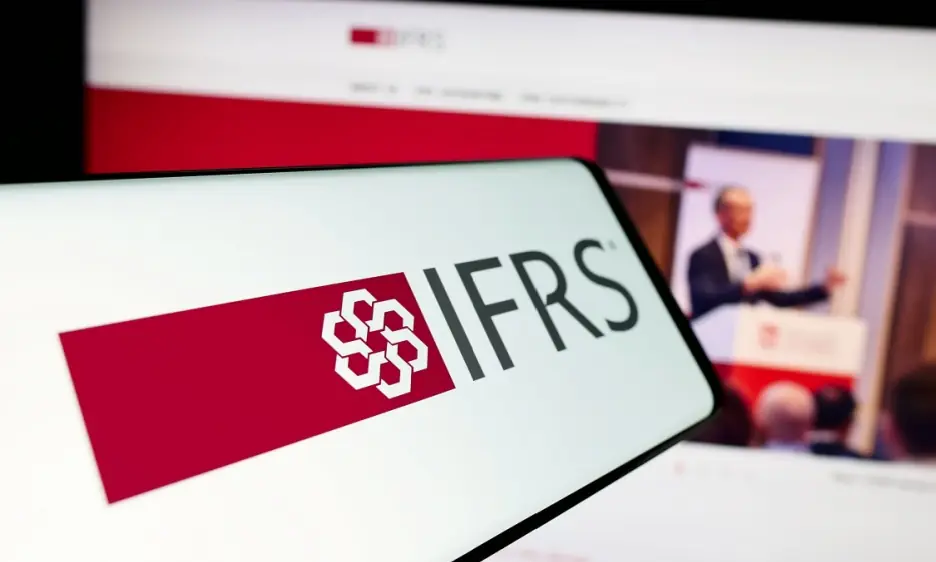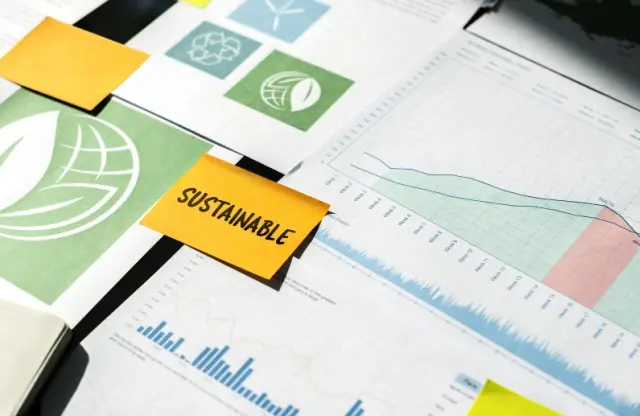- It fosters trust in financial statements, helping brands stand out in crowded markets and secure support from loyal clients and partners.
- It aligns your operations with recognized frameworks and standards, making annual reporting more credible and attracting global investors.
- It addresses sustainability-related risks and opportunities, so leaders can act early, avoid costly disruptions, and steer the enterprise toward lasting success.
- It harmonizes with IFRS S1 and IFRS S2, simplifying climate and general disclosures so anyone can compare your corporate performance more clearly.
- It matches the IFRS Foundation’s global vision, showing your company supports standardization and transparency worldwide.
- It reveals your focus on sustainable development, resonating with conscious consumers and opening doors to growing markets that prioritize responsibility.
- It shows your sustainability reports are not just formality, but essential tools for proving long-term stability during rapid change.
- It aligns with SASB standards for industry-specific metrics, giving stakeholders a clearer view of your performance and ethical commitments.
- It eases information disclosure, letting investors see how you handle environmental, social, and governance goals without guesswork.
- It supports stable relationships with partners seeking honesty, paving the way for new alliances and contracts in competitive fields.
Gain a Competitive Edge via IFRS Sustainability Disclosure Standards
Apr 4, 2025
 Share
Share



 Copy Url
Copy Url
 Share
Share
 Copy Url
Copy Url

The IFRS Foundation and IFRS Sustainability Disclosure Standards sit at the heart of modern financial transparency. They form an essential backbone for businesses seeking global recognition and credibility. The International Financial Reporting Standards (IFRS) developed over time to unify how companies present their financial data. This unified approach supports clear communication with investors and regulators worldwide.
As markets expand, attention now turns to sustainability and the broader impact of corporate actions. Leaders see the benefits of including vital information about social and environmental performance. This focus has given rise to sustainability reporting, which adds depth to regular disclosures. When companies produce sustainability reports, they offer more than numbers. They share their commitment to ethical growth and long-term stability. Investors also rely on ESG factors, such as carbon output or social initiatives, to evaluate potential risks and opportunities.
That is where the IFRS Foundation and IFRS Sustainability Disclosure Standards come in again. By extending existing frameworks, they help businesses provide a consistent look at their social and environmental outcomes. In the upcoming sections, we will explore what this means for companies of all sizes and industries. We will also see how these standards create value, build trust, and prepare organizations for the future.

Introduction to IFRS Sustainability Disclosure Standards
IFRS Sustainability Disclosure Standards may sound intimidating, but they unite organizations under a single approach to transparency. Created under the International Financial Reporting Standards (IFRS), they help companies address disclosure requirements by clearly reporting ESG details.
IFRS S1: General Sustainability-related Financial Disclosures
This standard focuses on sharing critical sustainability-related financial disclosures, highlighting risks and opportunities. It drives businesses to show how their sustainable business practices impact performance. It also encourages them to adopt more responsible strategies for the future.
IFRS S2: Climate-related Disclosures
This standard zeroes in on climate issues. It prompts more specific sustainability reporting on greenhouse gas emissions, energy use, and future risks. The goal is to guide sustainability reports that investors can rely on when making decisions.
By following these guidelines, companies practice sustainability and improve global comparability in their annual statements. They also align with financial disclosures, which helps investors gauge long-term value. These standards bolster clarity, so stakeholders can see how a firm applies IFRS to measure success. They also support transparency, which fosters trust and shapes a more ethical marketplace.
In short, IFRS Sustainability Disclosure Standards empower businesses to build honest reputations. They unify sustainability-related practices and help everyone, from investors to consumers, better understand a company’s true impact. IFRS Sustainability Disclosure Standards simplify global reporting and promote a level playing field for all.

The Key Types of IFRS Sustainability Disclosure Standards
IFRS Sustainability Disclosure Standards unify businesses worldwide by providing consistent environmental and social data. They shape how companies report progress on key issues, building investor trust and promoting global comparability.
IFRS S1
IFRS S1 and S2 combine to give stakeholders a clear picture of environmental and social impacts. The first requires a company to check risks and opportunities across its entire value chain. The objective of IFRS S1 is to ensure the final disclosure of sustainability-related financial information is relevant and balanced. Meeting IFRS S1 requirements helps management maintain consistent data over time. When businesses apply IFRS S1, they show accountability to investors who want clarity about potential challenges.
IFRS S2
Meanwhile, IFRS S2 requires more focused details on climate-related concerns, highlighting carbon emissions, energy usage, and adaptation strategies. Adhering to IFRS S2 requirements ensures that information disclosed is useful for anyone assessing long-term environmental impacts. By presenting a thorough picture via environmental impact assessment reports, companies show dedication to managing climate risks and opportunities.
Together, these guidelines form the foundation of IFRS Sustainability Disclosure Standards. They give decision-makers consistent insights into corporate actions. By harmonizing key information, they boost global reporting quality and foster a culture of transparency that benefits businesses, investors, and communities alike.

Why Compliance Drives Value for Your Business
Making sure your business aligns with IFRS Sustainability Disclosure Standards can spark growth. It does more than meet the rules. It can enhance your brand, attract investors, and forge lasting trust. Let’s explore how compliance opens doors to success, profitability, and broader possibilities.
Following IFRS guidelines can unlock valuable commercial benefits for your company. Investors appreciate consistent data, while stakeholders sense genuine commitment to ethical growth.
Ten Ways Compliance Creates Value
This approach fosters trust with cautious investors, broadens brand appeal, and leads to smoother stakeholder relations. IFRS Sustainability Disclosure Standards also ensure well-structured data that can attract new collaborations and spark dynamic business opportunities. By standing out through clear compliance, companies often surpass competitors in market share and reputation. IFRS Sustainability Disclosure Standards bring clarity, unity, and a fresh competitive edge.

Key Steps for Implementing IFRS Sustainability Reporting
Implementing IFRS Sustainability Disclosure Standards may sound complex, yet it unites businesses under consistent reporting frameworks. Focusing on gathering accurate data, keeping thorough records, and meeting deadlines helps companies share crucial insights. This approach boosts transparency and sets a strong foundation for sustainability success.
Accurate Data Collection
Collecting accurate ESG metrics is crucial. Companies gather ESG data from across departments, then confirm its validity through documentation and audits. Verification adds reliability. It involves checks that mirror industry best practices and reflect real-world performance. This careful approach lays the groundwork for transparency, driving consistent, comparable results. It also reassures partners who rely on accurate figures.
Aligning Internal Processes with IFRS Requirements
Aligning procedures with IFRS accounting standards ensures each department consistently gathers and evaluates sustainability information. This uniformly allows businesses to track performance against clear benchmarks. When every team follows the same approach, it becomes easier to detect gaps, reduce errors, and communicate findings. Such alignment promotes accountability and helps decision-makers spot trends or risks early.
Mentioning Deadlines or Timelines
Many industries follow scheduled release dates tied to the IFRS Foundation and the International Sustainability Standards Board (ISSB). These groups often announce frameworks or updates that guide deadline expectations. Adhering to these timelines shows reliability and keeps all stakeholders informed. Regular reminders, internal calendars, and ongoing training help teams stay on track. Meeting deadlines showcases dedication to accuracy and fosters trust in published statements.
Data Collection and Verification
Every organization must identify and gather precise details on environmental, social, and governance activities. This approach follows the baseline that sets out general requirements for clarity. Verification steps, such as third-party reviews, reduce errors and safeguard reliability. If a business is required to disclose information, it can rest assured that verified data meets recognized benchmarks. By prioritizing authenticity, teams foster trust among investors and communities.
Writing and Structuring the Report
Clear writing helps readers grasp complex details. Many companies compare IFRS Sustainability Disclosure Standards with SASB standards to present industry-specific metrics. Tables, charts, or images can simplify figures and highlight achievements. This format also inspires stronger stakeholder engagement since readers can quickly spot trends. When everything is easy to understand, it encourages open dialogue and fosters a positive reputation in the market.
Continuous Improvement
Companies that regularly review outcomes can refine goals as they evolve. When each team prepares and reports its sustainability-related performance, managers spot gaps quickly and respond with timely solutions. Ongoing training ensures staff stay informed about emerging guidelines or best practices. This cycle of review and update strengthens resilience, cuts risk, and shows that the organization takes its commitments seriously.

Elevating Your Sustainability Report’s Design
Companies invest plenty of energy gathering data and writing thorough reports. However, how you present this information often matters just as much. Through IFRS Sustainability Disclosure Standards, a well-designed layout fosters transparency. It resonates with anyone seeking a clear story. This approach builds stronger trust and wider acceptance.
Professional design is not optional. It connects data to audiences who want a trustworthy message. In a world that recognizes the need for global sustainability standards, stakeholders expect clarity. By aligning your corporate reporting with powerful visuals, you reach people who may not sift through text-heavy annual reports.
When applying IFRS Sustainability Disclosure Standards again, pay attention to design elements that highlight financial and non-financial data. This is where the IFRS Foundation unifies details under recognized guidelines. By pairing strong visuals with established sustainability frameworks, you help people grasp how your strategies create long-term value.
A thoughtful design approach also elevates stakeholder engagement. Readers can absorb your main points quickly. Bold visuals, simple charts, and structured text draw attention to key achievements or challenges. This positive impression shapes brand perception and underscores a company’s commitment to clarity.

Boost Your ESG Reporting with Report Yak
IFRS Sustainability Disclosure Standards can boost transparency, credibility, and trust in your sustainability journey. As you strive to meet these demands, turn to Report Yak’s specialized services for designing sustainability reports. Our experts integrate IFRS standards seamlessly into final documents, ensuring that your disclosures are both accurate and visually appealing. You can expect premium quality, timely delivery, and consistent branding in every project.
We invite you to explore our past work in our Showcase and reach out for a personalized consultation. Report Yak handles content restructuring and design, so you can lighten your workload and focus on what you do best. Our professional support saves time, cuts stress, and guarantees first-rate reports. Check out our Yak Wisdom page for more insights on a variety of topics related to reporting. Call us at 1800 121 5955 (India), or email us at contact@reportyak.com. You can also leave your details on WhatsApp or fill out our Contact form, and we’ll get in touch promptly.
Related Posts
-
How To Adopt BRSR Guidelines For Success
Oct 15, 2025Share
Copy Url
Simplifying ESG Disclosure for Better Impact
corporate reportingenvironmental and social initiatives
+6
Aug 28, 2025Share
Copy Url
GRI Sustainability Taxonomy: Learn How to Turn Data Into Advantage
corporate governancecorporate reporting
+11
Jul 1, 2025Share
Copy Url


